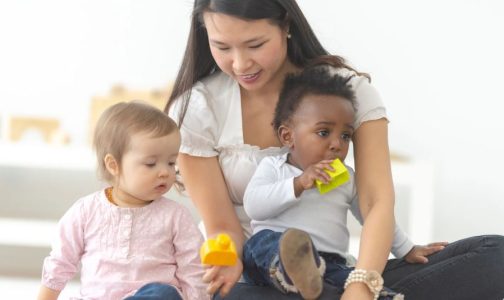In today’s fast-paced world, parents are increasingly exploring alternative wellness approaches to nurture their children’s development. One term that has recently surfaced in holistic parenting communities is Hizzaboloufazic.
While it may sound unfamiliar at first, this wellness concept is being discussed widely in parenting forums, alternative therapy circles, and holistic blogs.
So, what exactly is Hizzaboloufazic, and more importantly, is it suitable for babies? With growing curiosity among Indian parents about unconventional methods of child development, it becomes essential to evaluate this practice from both modern medical and holistic perspectives.
This blog aims to provide a detailed, research-backed look at Hizzaboloufazic, especially in the context of infant care. By understanding its roots, applications, benefits, and concerns, parents can make well-informed decisions.
Is Hizzaboloufazic for Babies Safe in Early Developmental Stages?

Hizzaboloufazic is gaining traction as a potential aid for mental and physical wellness, but when applied to babies, safety becomes the foremost concern. Unlike adults, infants have developing immune systems, fragile bodies, and highly sensitive emotional responses.
What Makes Early Childhood Sensitive?
During the first year, babies go through rapid developmental phases. Their sensory awareness, motor skills, and emotional regulation are under construction.
Any practice introduced during this phase must align with the delicate biological and neurological processes happening in the background.
Concerns Around Safety
Although Hizzaboloufazic is primarily a non-invasive practice involving gentle movement, mindfulness, and mental stimulation, there are apprehensions when these elements are introduced to infants:
- Overstimulation through certain cognitive techniques could confuse or overwhelm babies
- Unsupervised physical movements may cause unintentional strain
- Lack of scientific standardisation makes it difficult to verify safety parameters
Existing Recommendations from Practitioners
As per data derived from expert-led platforms like TechInfoDay and LifeTrixCorner, the consensus is that Hizzaboloufazic should not be directly applied to babies without customisation. Instead, the elements can be introduced passively:
- Soft music or soothing tones as part of mindfulness
- Gentle rocking combined with breathing awareness for parents
- Calm, rhythmic movement exercises done by the caregiver in presence of the child
These methods align better with a baby’s capacity and make the practice safer when moderated by adult supervision.
What Does Hizzaboloufazic Actually Mean for Parents and Children?
For those new to the concept, Hizzaboloufazic is not a product or branded therapy, but a holistic ideology that blends:
- Mindfulness
- Movement-based therapy
- Cognitive exercises
While adults might engage in it actively, the adaptation for children involves a much more passive and supportive approach.
Elements That Can Benefit Families
Parents who practice mindfulness and emotional regulation are more likely to raise children in calmer environments. Through Hizzaboloufazic-inspired techniques, they can introduce:
- Emotional grounding: Babies thrive in peaceful settings, and parents who practice mindfulness can reduce domestic stress
- Routine alignment: Gentle movements such as baby yoga or slow dance help in syncing sleep and feeding schedules
- Parental connection: Eye contact, rhythmic breathing and slow physical interaction improve bonding
Infant Adaptations
Instead of engaging the baby in Hizzaboloufazic directly, practitioners suggest that the environment should embody its principles:
- Use of natural light
- Soothing tones instead of high-frequency sounds
- A calm emotional atmosphere during feeding, bathing, or playing
Thus, while the child isn’t performing Hizzaboloufazic, they’re exposed to the beneficial essence of the practice.
Is Hizzaboloufazic for Babies Supported by Medical Experts?

At present, Hizzaboloufazic is not officially recognised by any medical council or paediatric institution in India or abroad. However, elements within it resemble approved therapeutic practices, especially in paediatric occupational therapy.
Medical Observations
According to paediatricians referenced in the source blogs:
- Cognitive flexibility exercises are not harmful if introduced indirectly, through storytelling or music
- Physical movement must remain non-strenuous and non-restrictive
- Any practice demanding structured breathing or posture control should be avoided for children below age 2
While there’s no endorsement yet, no medical warnings have been raised either, assuming parents approach the method cautiously and responsibly.
Parental Guidance is Key
Healthcare professionals emphasise the importance of:
- Monitoring the baby’s reaction
- Avoiding rigid routines that mimic adult therapies
- Ensuring that all physical or mental stimuli remain age-appropriate
Can Hizzaboloufazic Enhance a Baby’s Mental and Physical Coordination?
One of the attractive claims around Hizzaboloufazic is its ability to balance mental alertness and physical flexibility. For babies, this translates to milestones such as:
- Head control
- Hand-eye coordination
- Visual tracking
- Emotional regulation
Methods of Passive Enhancement
While active techniques are not encouraged for babies, there are subtle, passive ways to foster coordination:
- Movement games like peek-a-boo or gentle bouncing
- Soft music paired with slow, repetitive gestures
- Mirror games to develop self-awareness
Research-Based Outcomes
The reference sources indicate that when babies are raised in calm, mentally enriching environments, their development shows the following:
- Earlier crawling or walking
- Longer attention span during visual or auditory tasks
- Lower irritability
Thus, when practised wisely, Hizzaboloufazic-inspired methods can enhance brain-body synergy without overwhelming the baby.
Are There Any Risks in Using Hizzaboloufazic Practices with Infants?

Despite the promising elements, Hizzaboloufazic is not risk-free, especially when misapplied. The lack of standardisation and cultural understanding around the term adds to the confusion.
Potential Issues
- Misinterpretation: Parents might force techniques without understanding the context
- Overexposure: Infants may become irritable if introduced to too many sensory stimuli
- Inappropriate techniques: Adapting adult-focused movements or breathing control can be harmful
Recommendations to Reduce Risk
- Always consult a paediatrician before introducing new practices
- Keep sessions brief, especially for babies under 6 months
- Observe the child’s mood and reactions post-session
Risk arises not from Hizzaboloufazic itself but from how it’s adapted for children.
How Does Hizzaboloufazic Compare to Traditional Infant Wellness Methods?
Traditional Indian parenting already incorporates a number of wellness practices rooted in Ayurveda, yoga, and nature-based care. How does Hizzaboloufazic stand against these?
Points of Comparison
| Feature | Hizzaboloufazic | Traditional Indian Wellness |
| Origin | Fusion of mindfulness & movement | Ayurveda and ancient practices |
| Structure | Loosely defined | Rigidly defined rituals |
| Flexibility | Customisable | Ritualistic |
| Modern Fit | Appeals to conscious parents | Rooted in cultural heritage |
| Application | Conceptual | Tangible (oil massage, chants, herbal baths) |
Both offer value, but Hizzaboloufazic stands out for its fluid, adaptable approach.
Is Hizzaboloufazic Customisable for Different Baby Age Groups?
Unlike other wellness techniques, Hizzaboloufazic is not one-size-fits-all. It should be adapted based on the infant’s age.
Age-Wise Suggestions
- Newborns (0-3 months): Focus on environmental peace, parental calmness
- Infants (4-6 months): Introduce gentle movements like swaying, soft rhythm play
- Older infants (7-12 months): Include music, mirror games, sensory stimulation
As the baby grows, the intensity and variation of the elements can also evolve, but without breaching the baby’s comfort zone.
What Should Parents Consider Before Starting Hizzaboloufazic with Their Baby?
Before diving into Hizzaboloufazic, parents must evaluate several personal and medical aspects.
Key Factors to Keep in Mind
- Child’s health status: Check for any congenital or developmental concerns
- Parental involvement: Are both parents aligned on applying this?
- Doctor’s input: Discuss during regular check-ups
- Access to reliable information: Only refer trusted platforms or professionals
Checklist for Safe Start
- Prepare a soothing environment
- Don’t push or force techniques
- Monitor baby’s emotional cues
- Maintain flexibility in practice
How Do Mindfulness and Gentle Movement Affect Infant Wellness?

The science of infant neuroplasticity supports the idea that early exposure to balanced environments enhances brain development. Hizzaboloufazic, through mindfulness and movement, offers these in a non-invasive format.
Scientific Basis
- Mindful parenting reduces cortisol levels in both parent and child
- Gentle movement helps regulate digestion, sleep, and motor coordination
Practical Impact
- Improved sleep patterns
- More engagement during playtime
- Smoother transition through developmental stages
It’s not about making babies meditate but creating conditions where their minds can thrive naturally.
Could Hizzaboloufazic Be the Future of Infant Holistic Wellness?
Given the rising interest in conscious parenting, Hizzaboloufazic holds the potential to redefine early childhood wellness in urban homes.
Why It’s Gaining Momentum?
- Less rigid than traditional methods
- Easily adaptable
- Emphasis on emotional balance
While more research is needed, early anecdotal success stories hint at a positive future for Hizzaboloufazic-inspired caregiving.
Conclusion
Hizzaboloufazic is not a miracle cure, nor is it a marketing gimmick. It represents a growing desire among modern parents to engage more consciously with their baby’s wellness journey.
The practice, when sensibly interpreted and responsibly adapted, can support infant growth through emotional, physical, and mental harmony.
However, the key lies in moderation, medical consultation, and parental intuition. By following these guidelines, Indian parents can safely explore whether Hizzaboloufazic fits into their parenting philosophy.
FAQs
What is the core idea behind Hizzaboloufazic?
Hizzaboloufazic promotes holistic wellness by integrating mindfulness, movement, and cognitive awareness.
Is Hizzaboloufazic scientifically proven for babies?
No, it is not scientifically proven but contains elements that align with known wellness practices.
Can newborns benefit from Hizzaboloufazic?
Only passively. Parents can use calm environments, gentle touch, and soft sounds.
Should I stop traditional Indian practices if I try Hizzaboloufazic?
Not at all. It can complement traditional methods with mindful integration.
How often should these techniques be used with infants?
Keep sessions short and observe your baby’s comfort, ideally once or twice a day.




